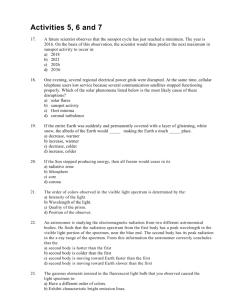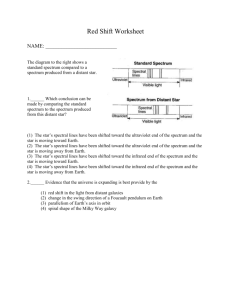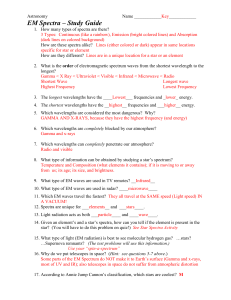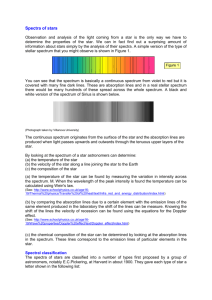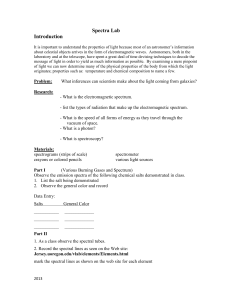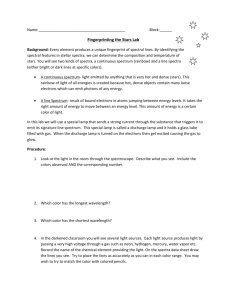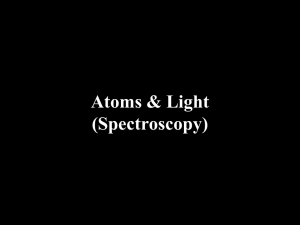Lesson 10 Red Shift
advertisement
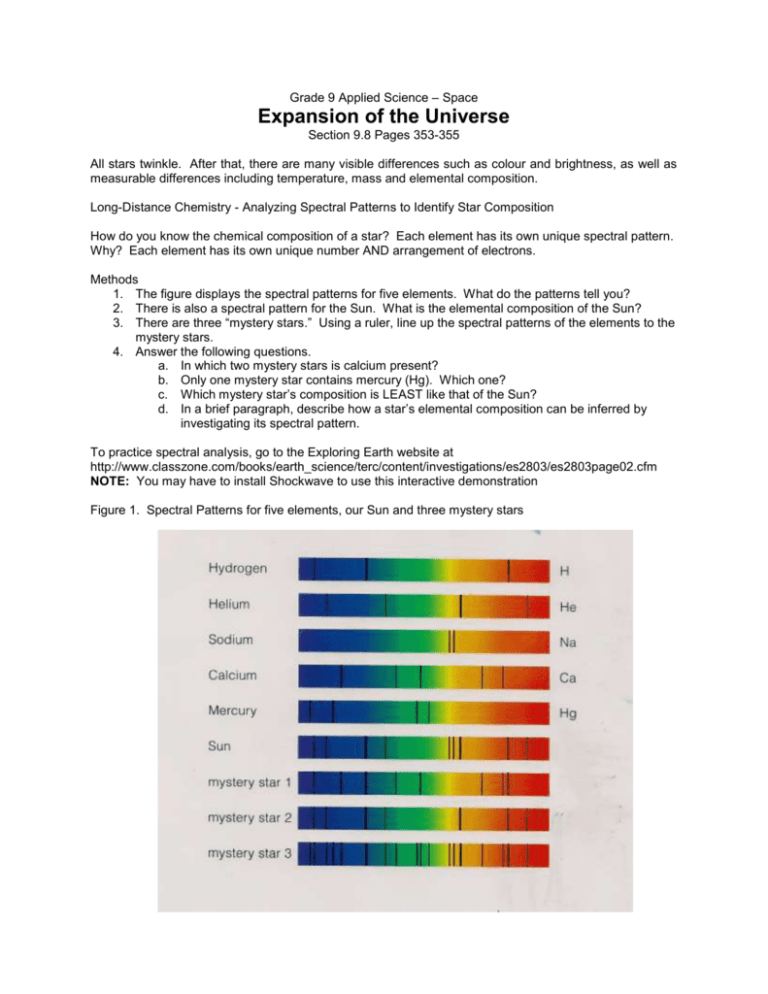
Grade 9 Applied Science – Space Expansion of the Universe Section 9.8 Pages 353-355 All stars twinkle. After that, there are many visible differences such as colour and brightness, as well as measurable differences including temperature, mass and elemental composition. Long-Distance Chemistry - Analyzing Spectral Patterns to Identify Star Composition How do you know the chemical composition of a star? Each element has its own unique spectral pattern. Why? Each element has its own unique number AND arrangement of electrons. Methods 1. The figure displays the spectral patterns for five elements. What do the patterns tell you? 2. There is also a spectral pattern for the Sun. What is the elemental composition of the Sun? 3. There are three “mystery stars.” Using a ruler, line up the spectral patterns of the elements to the mystery stars. 4. Answer the following questions. a. In which two mystery stars is calcium present? b. Only one mystery star contains mercury (Hg). Which one? c. Which mystery star’s composition is LEAST like that of the Sun? d. In a brief paragraph, describe how a star’s elemental composition can be inferred by investigating its spectral pattern. To practice spectral analysis, go to the Exploring Earth website at http://www.classzone.com/books/earth_science/terc/content/investigations/es2803/es2803page02.cfm NOTE: You may have to install Shockwave to use this interactive demonstration Figure 1. Spectral Patterns for five elements, our Sun and three mystery stars What is Light? Light is created from electromagnetic energy. We cannot see the energy itself, but it causes changes at an atomic level as it vibrates. Each wavelength of light has a specific mode of vibration (e.g., Those that vibrate faster have higher amounts of energy, and those that vibrate slower have lower amounts of energy). Although the electromagnetic spectrum comprises wavelengths from ultra high energy (and dangerous) gamma rays to ultra low energy radio waves, the only part that we can see is the very limited "visual spectrum." In the visual spectrum, wavelength corresponds to colour. In other words, violet and red each have a characteristic range of wavelengths. In the visible spectrum, violet has the shortest wavelengths and red as the longest. Normally when we look at white light, such as from the Sun or many artificial sources, it appears more or less white. We do not see all the colours (i.e., When all these colours are mixed together, they appear white). How do I relate Light to Stars? Light from stars can reveal an enormous amount about their characteristics, composition and state of motion. Arguably the most important aspect of star light is the fact that it can reveal to us what star is composed of, and in so doing allows us to classify stars into a variety of types. In order to do that, the light from a star must be spread out into a spectrum or range of wavelengths (what we call "colors" in the visible part of the spectrum). This is done with a telescope and an attached device known as a spectroscope. The chemical composition of a star can be determined by the light it emits. Elements in the star’s atmosphere absorb certain colours (i.e., remove these colours from the star’s spectrum). The missing colours show up as black line in the emission spectrum. When we compare the black line with the spectra of various elements, we can determine which elements are present in the star.

